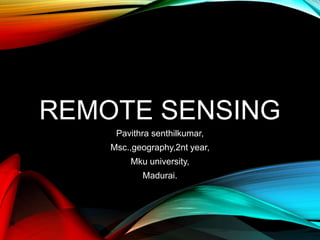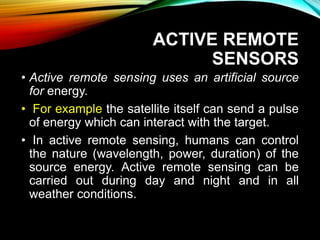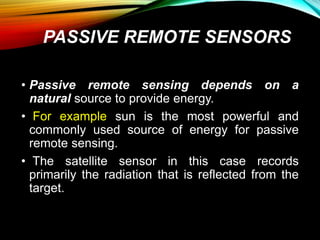Remote sensing involves obtaining information about objects through analysis of sensor data without physical contact. It has its origins in aerial photography from tethered balloons in the 1840s. Modern remote sensing uses platforms like satellites carrying active sensors that emit energy or passive sensors that record natural energy like sunlight. Sensors collect data on environmental factors that is processed and can be applied to fields like agriculture, geology, oceanography and more.
















